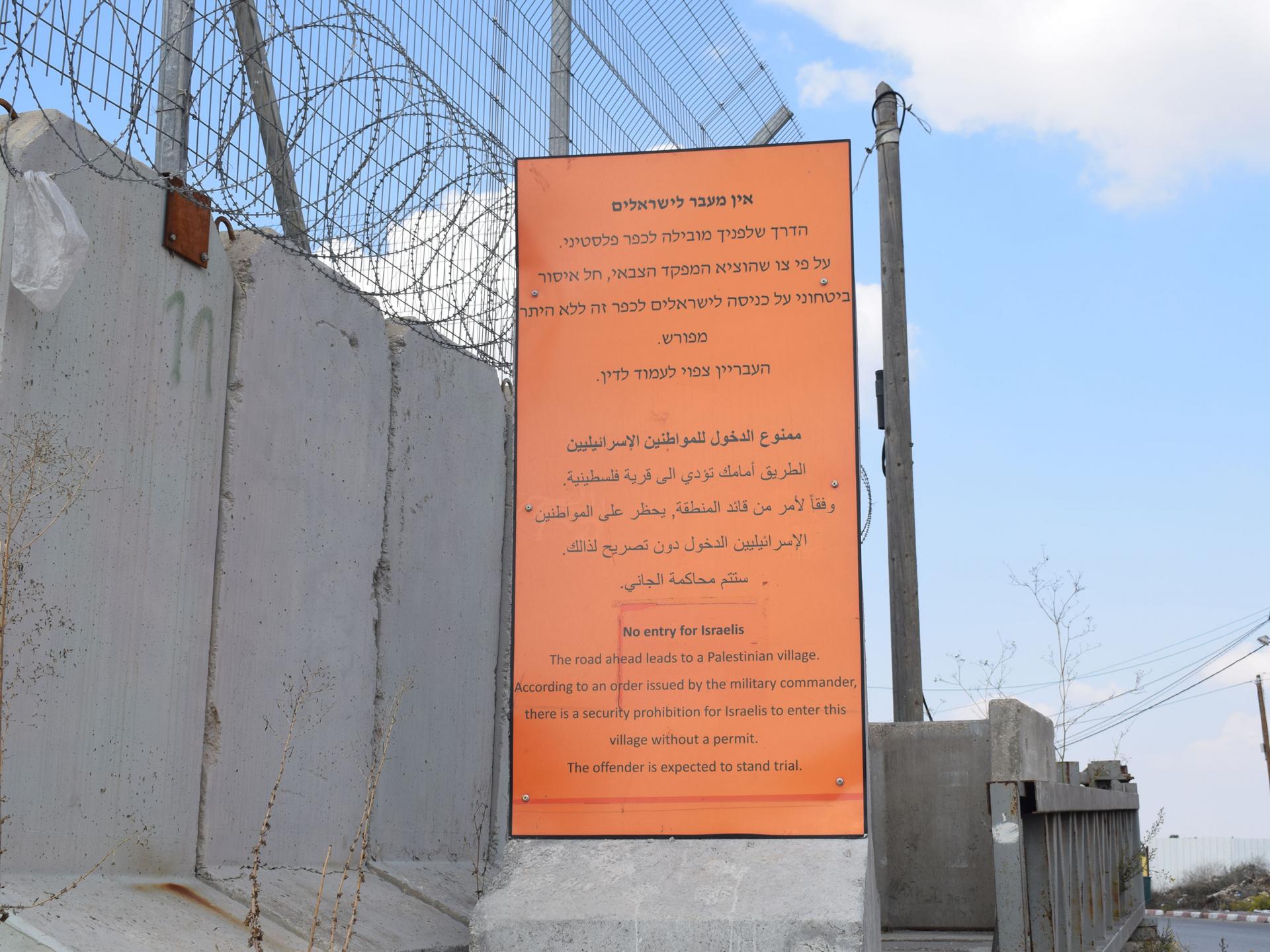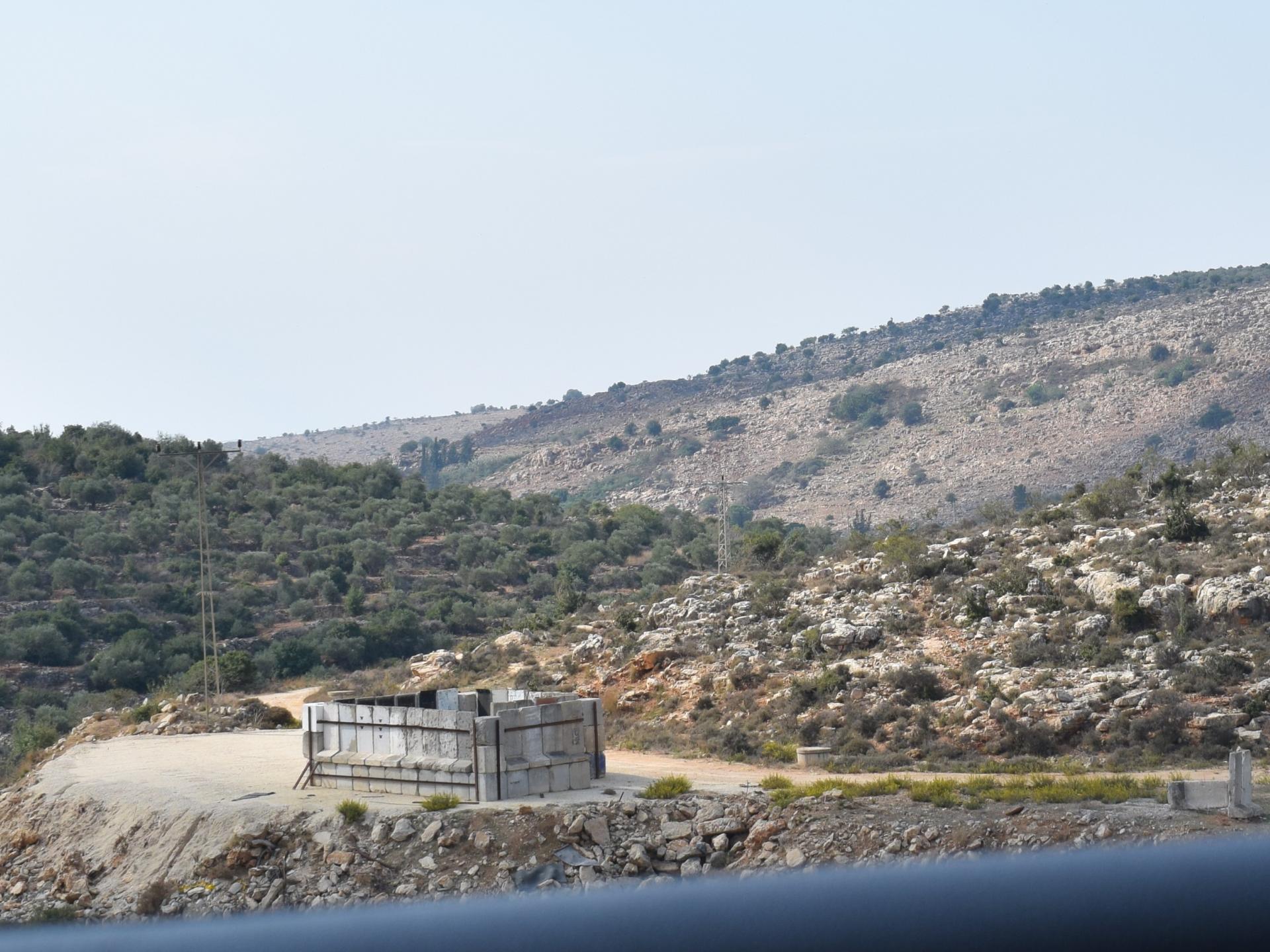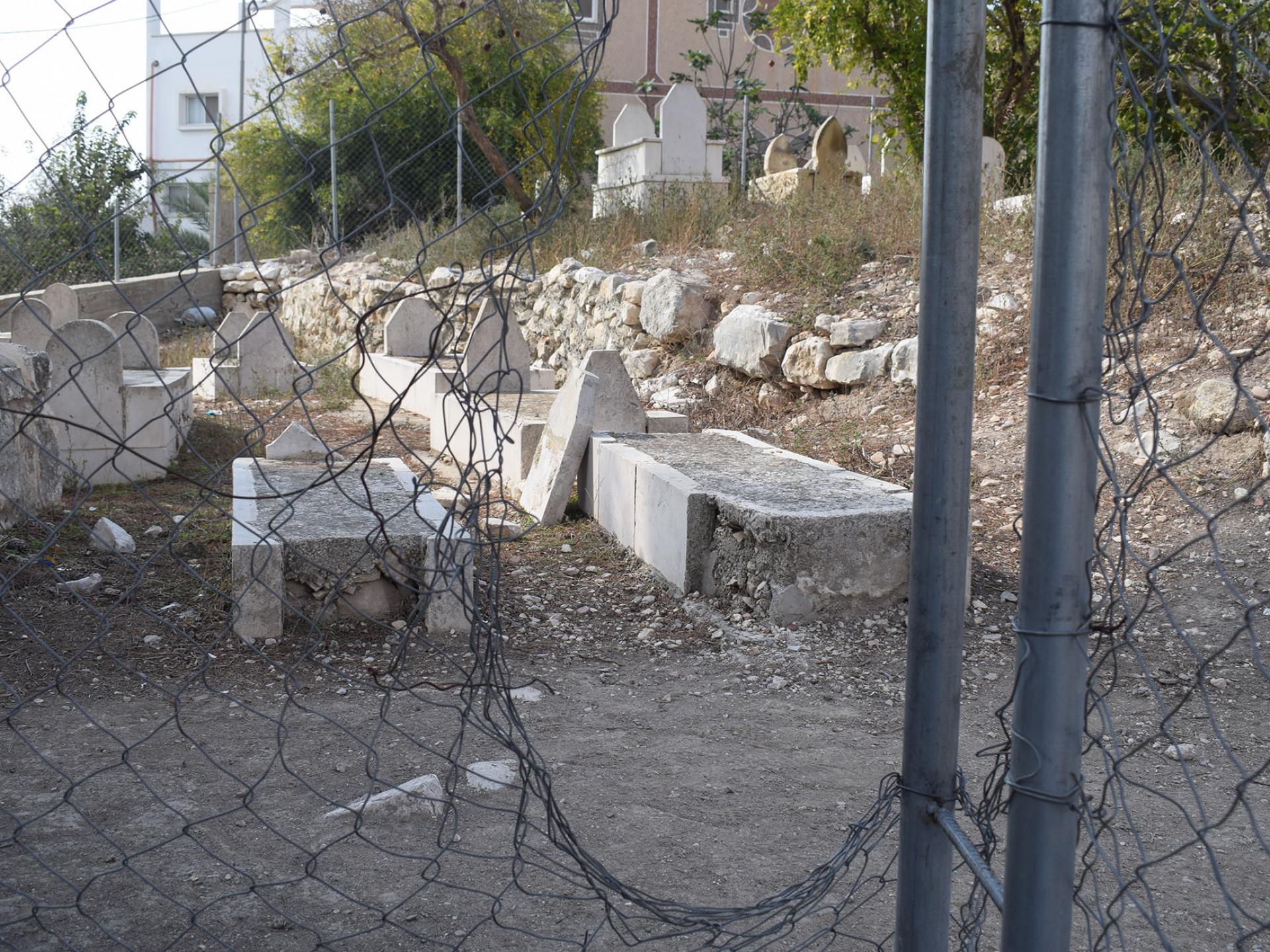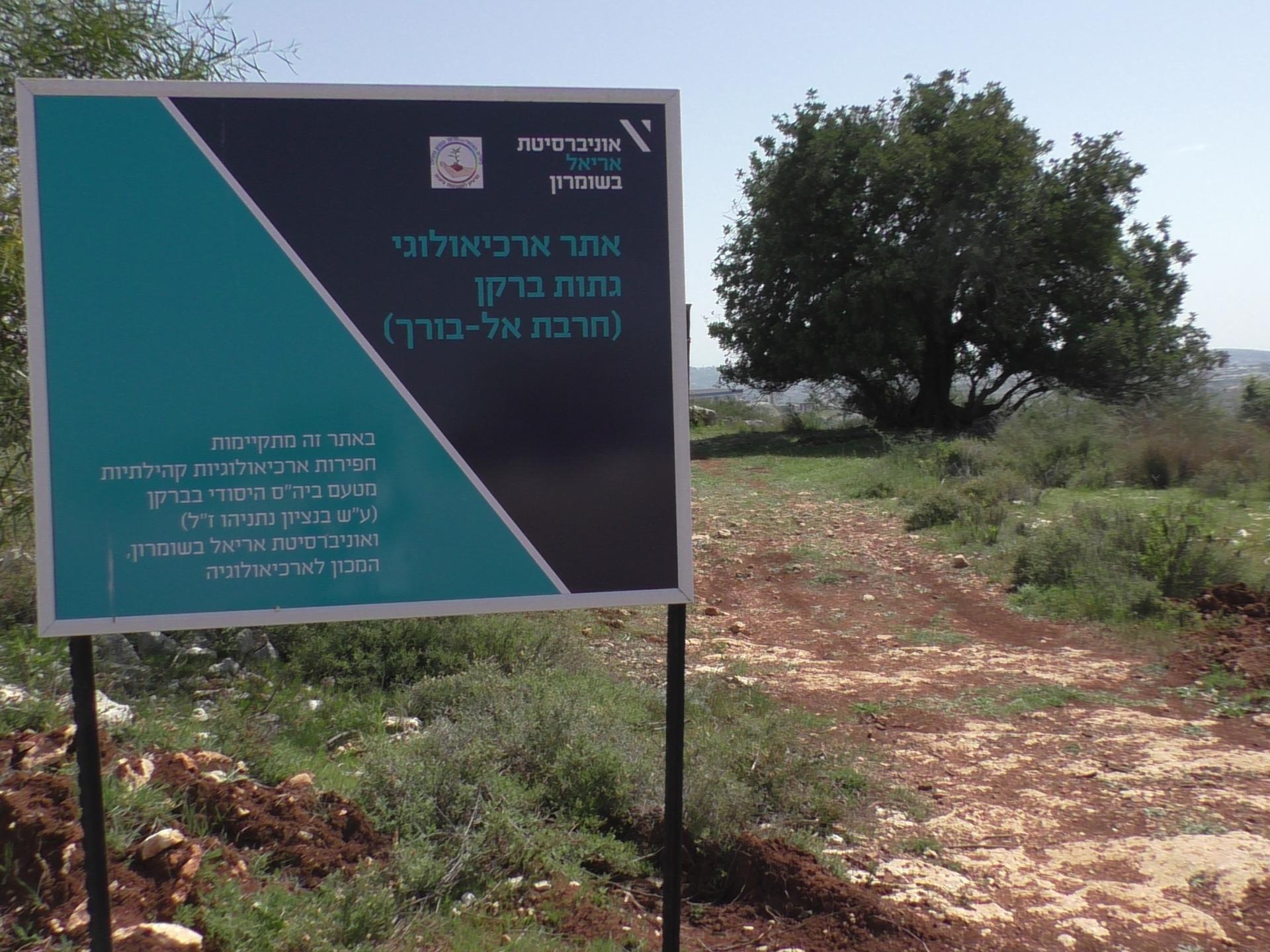Visit to Hares and Kif Al Hares visit


We came to learn the meaning of settler-colonist city Ariel’s location in the heart of the West Bank. Beside its landscape devastation, it also quite intentionally serves the destruction of Palestinian economy and culture.
- Ariel disconnects the Palestinian district urban center Salfeet from the villages that it has served traditionally – Hares, Kif Al Hares, Jama’een and others. Furthermore, it contains several agricultural gates
 intended for the farmers of Kif Al Hares, Salfeet, Marda, Yasouf and Iskaka We went out to see what happens there (as we also took part in the protest demonstration held in front of the Ariel gate about two months ago).
intended for the farmers of Kif Al Hares, Salfeet, Marda, Yasouf and Iskaka We went out to see what happens there (as we also took part in the protest demonstration held in front of the Ariel gate about two months ago). - Teams of archeology researchers from the “university” of Ariel’s archeology department are sent to carry out digs and steal findings from archeological sites located on Palestinian land (processes that we know and have closely documented as in Deir Sam’an, a family of A-Deek village and others). Are the stolen objects on display? Where? For what audiences?
- Another archeological site in the area, that used to belong to Hares and has been confiscated for the benefit of the Israeli industrial zone of Barkan, is called Al Buraq. The place has become an official site of the Ariel department of archeology.
- Along with the erection of settler-colony Ariel’s fence, the maqam named Sheikh Ahmad Al Qassab has been irretraceably ruined. It used to stand high on the hills between Marda and Salfeet. The area of maqam Sheikh Abu Zared (Iskaka and Yasouf) has been declared a nature reserve named Alonei Tapuach (inside Area B) and is located between the “university” of Ariel and the settler-colony Kefar Tapuach. This constitutes a dual threat to the maqam that the villagers of Iskaka and Yasouf have always taken the trouble to caretake.
- As we well know, there are Jewish mass night-pilgrimages to the two maqams (in the belief that Jewish Biblical figures are buried there – Caleb Ben Yefune and Joshua Bin Nun) located in the heart of the village of Kif Al Hares, and they disrupt the lives of its Palestinian inhabitants. We came to hear about this from the village council.
Naturally our entire plan will require multiple visits. This time we concentrated on the agricultural gates and the mass pilgrimages to Kif Al Hares. We were helped by our friend A. who lives in the area and knows it well. He took us on our field visit and organized our meeting at the Kif Al Hares council. During our tour of the area we saw, among other things, a strange ominous looking structure. See photo.
The agricultural gates in Ariel were closed only this year, the farmers come from Salfeet and are not allowed through. Usually they wait for a long time and then give up. This year, according to people from Kif Al Hares, they were given one week but no more. The work hours are from 9 a.m. to 4 p.m. and this includes the harvesting of olives and transporting them on donkey-back to the village. Our friend A. thinks the present stricter policy is due to the coming elections. So is the threat to the shops near Kif Al Hares. They were built along with the Jewish settler-colony. During the outbreak of the Second Intifada they were burnt and closed for some years. Then they came back. The structures are of course under demolition orders (although the buildings themselves were there before Ariel was founded). They are not allowed to renovate so they do this on Saturdays and Jewish holidays. Sometimes the authorities turn a blind eye, sometimes not. A. assumes they turn a blind eye because prices are low and shopkeepers nice, but the shop owners live in uncertainty and don’t know when their livelihood will be destroyed. Usually they try to reach understandings, says A. They’ve already been told “We’ll manage with the leftists, just don’t demonstrate”.


Kif Al Hares – our visit at the village council
According to our hosts, agreement has been reached with the Israeli army to allow 4 pilgrimages a year. However, these take place over 20 times a year, and always at night. The settler-colonists coordinate the entrance of a bus or two with the army, and the army blocks the center of the village with garbage dumpsters and other means. The village itself is under curfew, even an ambulance cannot get through.
The councilmen also complained about the destruction of Muslim gravestones near the tomb of Caleb Ben Yefune, and wondered why the grave of a Muslim holy man or military leader does not become a target for Jewish pilgrimage…
Towards the end of our visit the head of the village council said he has a difficult question for us: how is it that we served in the Israeli army and still send our children there, while at the same time we are peace activists and our heart is with the Palestinians? Another council member came to our defense, saying “Better late than never…” But the question remained open and in the air even after we left.
In our visit at the site of the Caleb Ben Yefune tomb, we saw that the Civil Administration ’s Staff Officer for Religious Matters has actually become the Ministry of Religions. Tzvia told us that Attorney Michael Sfard directed attention to the fact that in like manner, medication transferred to the West Bank are no longer done so by the Civil Administration’s Staff Officer for Medical Matters but by the Ministry of Health. The Israeli occupation is taking on an official state appearance while the Civil Administration is on the retreat. What’s the next phase?
’s Staff Officer for Religious Matters has actually become the Ministry of Religions. Tzvia told us that Attorney Michael Sfard directed attention to the fact that in like manner, medication transferred to the West Bank are no longer done so by the Civil Administration’s Staff Officer for Medical Matters but by the Ministry of Health. The Israeli occupation is taking on an official state appearance while the Civil Administration is on the retreat. What’s the next phase?
